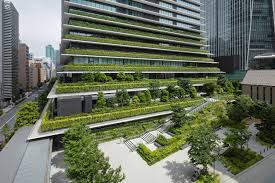In the heart of bustling cities, where space is often at a premium, vertical gardens have emerged as a transformative solution for urban dwellers seeking to integrate nature into their living environments. As we move into 2024, the concept of vertical gardening is evolving, offering innovative design ideas that not only beautify spaces but also contribute to environmental sustainability and well-being. This article explores the top vertical garden design ideas for urban living, highlighting trends, benefits, and practical tips to help you create a stunning and functional vertical garden.
1. The Rise of Vertical Gardens

1.1 Urbanization and Space Constraints
As cities continue to grow, the demand for housing increases, often leading to smaller living spaces. Vertical gardens offer an ingenious solution to this challenge, allowing residents to maximize their limited space by utilizing vertical surfaces.
1.2 Environmental Benefits
Vertical gardens contribute to urban sustainability by improving air quality, reducing heat island effects, and supporting biodiversity. They act as natural air filters, trapping pollutants and providing a habitat for various species of plants and insects.
1.3 Aesthetic Appeal
Beyond their functional benefits, vertical gardens add a touch of natural beauty to urban environments. They transform bare walls into lush green canvases, creating a serene and visually appealing contrast to the concrete jungle.
2. Top Vertical Garden Design Ideas for 2024
2.1 Modular Vertical Gardens
Modular vertical gardens are an increasingly popular choice for urban living. These systems consist of pre-fabricated panels or modules that can be easily assembled and customized to fit various wall sizes and shapes. Key features include:
- Customizability: Modular systems allow you to design your garden layout according to your preferences, choosing from a variety of plant types and arrangements.
- Ease of Installation: Many modular systems are designed for DIY installation, making them accessible for urban residents without professional help.
- Scalability: You can expand or reconfigure your vertical garden as needed, adapting it to changes in your living space or design preferences.
2.2 Living Walls with Integrated Irrigation
Living walls equipped with integrated irrigation systems offer a low-maintenance solution for urban gardeners. These systems use built-in irrigation channels or drip systems to deliver water directly to the plants’ roots. Benefits include:
- Reduced Watering Frequency: Integrated irrigation systems ensure that plants receive consistent moisture, reducing the need for manual watering.
- Water Efficiency: These systems minimize water waste by targeting the root zone and preventing excess runoff.
- Convenience: Automated irrigation makes it easier to maintain a thriving vertical garden, even for busy urban residents.
2.3 Edible Vertical Gardens
For those interested in growing their own food, edible vertical gardens are a fantastic option. These gardens allow you to cultivate herbs, vegetables, and even fruits in vertical structures. Key considerations include:
- Space Utilization: Edible vertical gardens make the most of limited space, enabling you to grow a variety of crops in a compact area.
- Fresh Produce: Growing your own food provides access to fresh, organic produce and reduces reliance on store-bought items.
- Aesthetic and Functional: Edible plants can be integrated into decorative vertical garden designs, combining beauty with functionality.
2.4 Green Screens for Privacy
Vertical gardens can also serve as green screens, providing privacy and screening unsightly views in urban environments. These living walls can be strategically placed to create secluded outdoor spaces or block views from neighboring buildings. Features to consider include:
- Dense Planting: Choose plants with dense foliage to create effective privacy screens.
- Maintenance: Opt for low-maintenance plant varieties to ensure the green screen remains visually appealing and functional.
- Design Integration: Incorporate the green screen into your overall garden design, blending it with other vertical elements for a cohesive look.
2.5 Vertical Gardens with Artistic Elements
Incorporating artistic elements into your vertical garden design adds a unique touch to your urban space. Consider integrating:
- Sculptural Planters: Use planters with interesting shapes or materials to create visual focal points.
- Artistic Panels: Design custom panels with artistic patterns or motifs that complement the plants and overall design.
- Lighting Effects: Add LED or accent lighting to highlight the beauty of the garden and create a dramatic effect in the evenings.
3. Practical Tips for Vertical Garden Success

3.1 Choosing the Right Plants
Selecting the right plants is crucial for a successful vertical garden. Consider factors such as:
- Light Requirements: Choose plants that thrive in the light conditions of your vertical garden, whether it’s full sun, partial shade, or low light.
- Growth Habits: Opt for plants with suitable growth habits for vertical gardens, such as climbing or trailing varieties.
- Maintenance Needs: Select plants that match your level of commitment and maintenance, from low-maintenance succulents to more demanding species.
3.2 Ensuring Proper Support and Structure
A sturdy support structure is essential for a vertical garden. Ensure that:
- Weight Capacity: The wall or structure supporting your vertical garden can handle the weight of the plants, soil, and irrigation system.
- Attachment Methods: Use appropriate mounting methods and materials to securely attach the vertical garden components to the wall.
3.3 Regular Maintenance
Maintaining a vertical garden involves:
- Pruning and Trimming: Regularly prune and trim plants to prevent overgrowth and maintain the desired shape and appearance.
- Checking for Pests: Monitor plants for pests or diseases and address issues promptly to keep your garden healthy.
- Fertilization: Provide regular fertilization to support plant growth and ensure optimal performance.
4. Conclusion
As urban living continues to evolve in 2024, vertical gardens offer a practical and aesthetically pleasing solution for integrating nature into city environments. From modular systems and living walls to edible gardens and artistic designs, there are numerous ways to create a vertical garden that enhances your living space. By choosing the right plants, ensuring proper support, and committing to regular maintenance, you can enjoy the benefits of a vibrant and functional vertical garden. Embrace these design ideas to transform your urban environment into a lush, green oasis that reflects your personal style and enhances your quality of life



